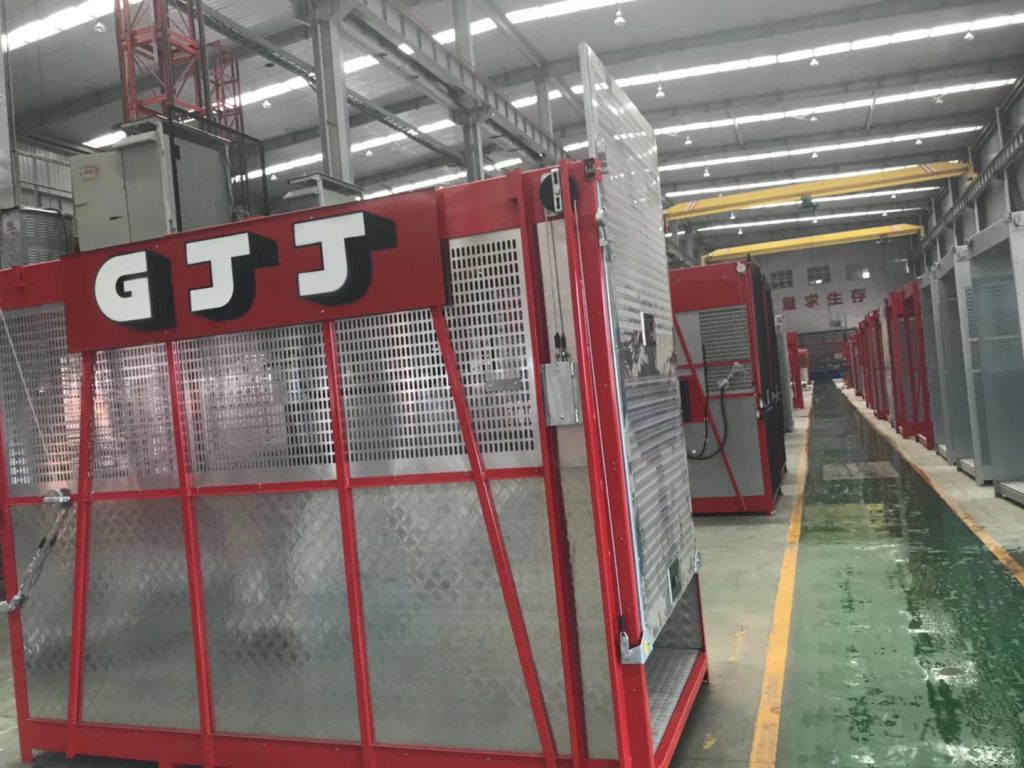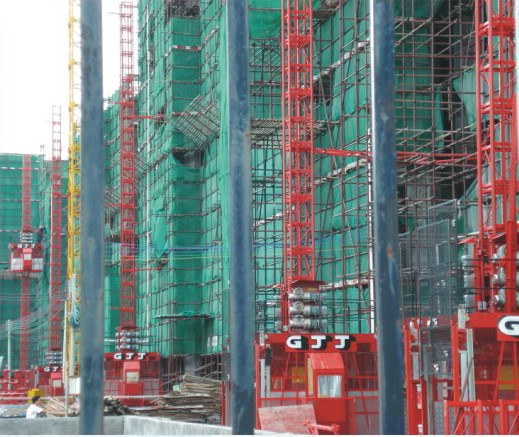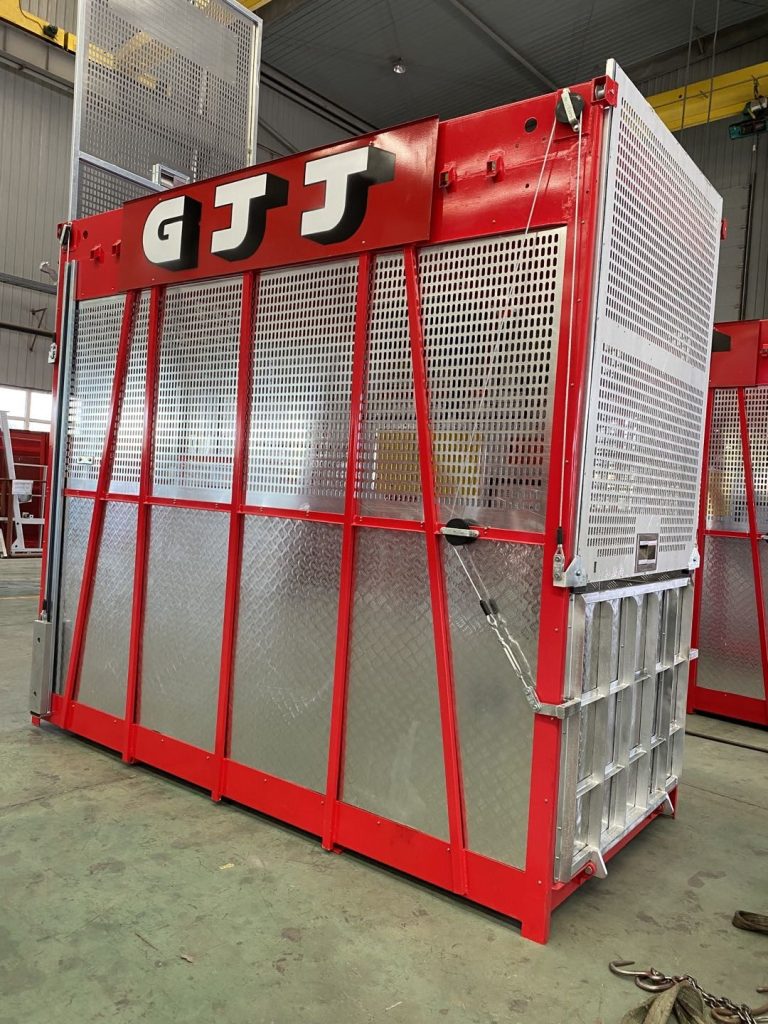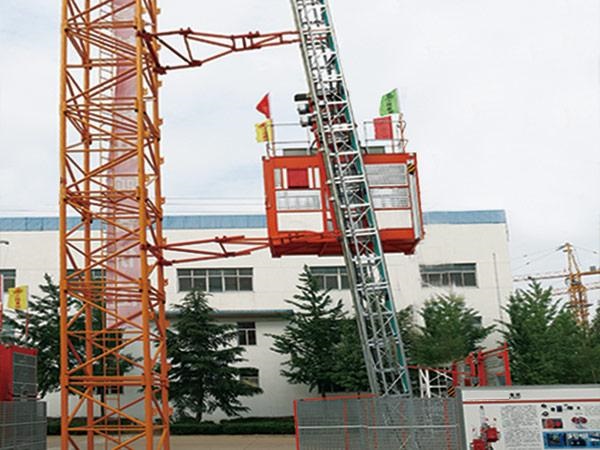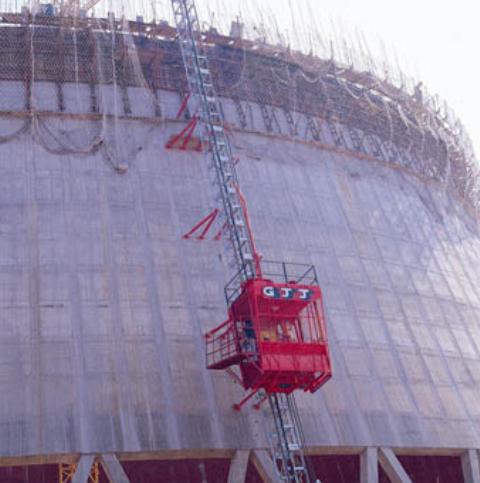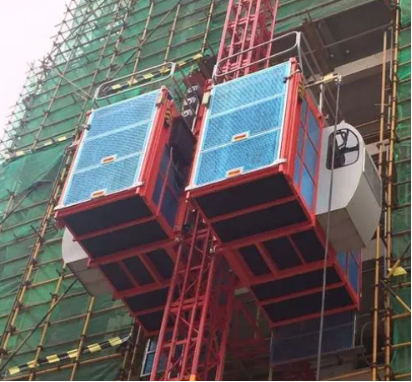Regarding vertical transportation in industrial or construction environments, two common pieces of equipment often come into play: the construction hoist and the industrial elevator.
At first glance, they may seem similar—they both lift people or materials vertically. However, in practice, they differ significantly in terms of design purpose, application scenarios, safety standards, and long-term value.
Quick takeaway:
- Construction companies with short-term projects tend to choose construction hoists, often on a rental basis.
- Manufacturers and logistics operations with long-term transport needs prefer industrial elevators for their efficiency and stability.
If you’re evaluating which equipment best fits your business or project, understanding their differences can help you make a smarter, more cost-effective investment.
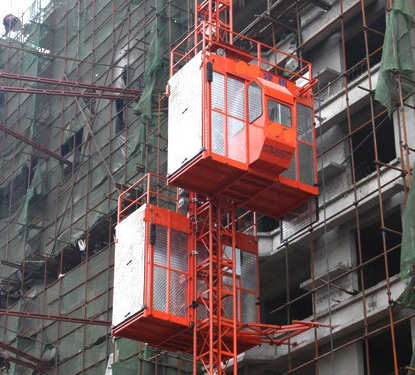
How Are Construction Hoists and Industrial Elevators Used Differently
Construction Hoist: The “Temporary Mover” on Job Sites
A construction hoist is designed for temporary use, mainly on construction sites. It helps move workers, tools, and building materials between floors of buildings under construction. Once the project ends, the hoist is dismantled and moved to the next site.
Who Is It For?
- General contractors
- Construction companies with frequent job site rotation
- Project managers working on short to mid-term developments
Common Use Cases
- High-rise building construction
- Bridge and tower construction
- Large-scale renovation projects
Key Functions
- Transporting construction materials like rebar, cement, and tools
- Carrying personnel between floors during construction
- Supporting changing building heights as the project progresses
Key Features
- Temporary: Easy to install, adjust, and dismantle
- Weather-resistant: Operates outdoors in wind, dust, or rain
- Flexible: Height can be adjusted as the structure grows
- Low cost: Mostly rented to reduce upfront investment
Industrial Elevator: The “Long-Term Logistics Assistant”
An industrial elevator is a permanent installation used in facilities such as factories, warehouses, power plants, and mines. It’s a critical part of the infrastructure, built for long-term use and designed with enhanced safety, durability, and automation.
Who Is It For?
- Manufacturing plants
- Logistics hubs and distribution centers
- Heavy industry and energy facilities
Common Use Cases
- Moving raw materials or heavy equipment
- Personnel transport in multi-level plants
- Long-term integration into logistics workflows
Key Functions
- Reliable transport of goods or staff across levels
- Seamless integration with automated warehouse systems
- High-frequency operation with minimal downtime
Key Features
- Permanent: Fixed installation with a lifespan of 10–30 years
- Customizable: Explosion-proof, corrosion-resistant, cleanroom-compatible options available
- Automated: Floor selection, remote monitoring, and diagnostics
- Stable: Smooth operation even under heavy loads
How Construction Hoists and Industrial Elevators Differ: A Core Performance Comparison
| Feature | Construction Hoist | Industrial Elevator |
| Load Capacity | 1–20 tons (commonly 3–10 tons) | 0.5–50+ tons (custom options up to 100+ tons) |
| Speed | 0.3–1 m/s (safety-focused) | 0.1–2 m/s (adjustable speeds) |
| Durability | 3–5 years (temporary, high-intensity use) | 10–30 years (with regular maintenance) |
| Protection | Basic weather protection | Optional: explosion-proof, anti-corrosion, dustproof |
| Mobility | Mobile, disassemblable, reusable | Fixed installation, high retrofit cost |
Construction Hoists and Industrial Elevators: Which One Should You Choose?
| Your Need | Choose a Construction Hoist | Choose an Industrial Elevator |
| Usage Period | Short-term (less than 2 years) | Long-term (more than 5 years) |
| Budget Strategy | Rental-friendly, low upfront cost | Capital investment, high initial cost |
| Work Environment | Outdoor, dusty, no special protection needed | Special environments: explosion, corrosion, cleanroom |
| Capacity & Speed | Moderate load, slower operation | Heavy-duty or high-speed transport |
| Flexibility | Easy to move, reinstall at new site | Fixed in place, best for stable facilities |
Final Thoughts
Choosing between a construction hoist and an industrial elevator isn’t just a matter of technical specs—it’s about choosing the right solution for your operation’s workflow, budget, and long-term strategy.
| Feature | Construction Hoist | Industrial Elevator |
| Usage | Temporary | Permanent |
| Typical Buyer | Construction Companies | Factories, Warehouses, Power Plants |
| Installation Time | Quick setup and removal | Fixed installation |
| Drive System | Rack & Pinion | Traction / Hydraulic |
| Safety Features | Basic | Advanced (automation, diagnostics) |
| Control System | Manual or Semi-auto | Fully automatic, programmable |
| Cost Model | Rental or Low CapEx | Long-term CapEx investment |
| Lifespan | Project-based | 10+ years with maintenance |
- If your goal is to support a temporary project efficiently and affordably, a construction hoist is your go-to.
- If you require daily, reliable transport in a permanent facility, the industrial elevator will pay off in safety, efficiency, and value over time.
Tip: Still not sure? Contact an expert supplier to discuss your site conditions, load requirements, and project timeline
they can provide a tailored recommendation that saves time and money.
Construction Hoist for Sale
From the time of our founding in 2006, CPTC – Chongqing Clipper Industry Co., Ltd. Of China has focused exclusively on the Construction engineering equipment and spare parts. Including complete construction hoist, tower crane, gondola and spare parts. We are supplying spare parts of GJJ, ZENIT, HERCULES, ORBIT, CREDO, LIFTEC, VERTILIFT, A.T.L., BAODA, ZOOMLION, XCMG, SANY and so on. Our products including, GEAR RACK, PINON, SAFETY DEVICE, MOTOR, GEARBOX, ROLLER, MASTER SECTION, TIE IN, CABLE, LIMIT SWITCH, FIXING AGNLE, BOLT, SLEWING RING, INVERTER…. We have developed a unique expertise and knowledge of our products. Our technical knowledge and foundational support, combined with the high quality of our product, has made CPTC one of the most successful in the construction equipment industry.

